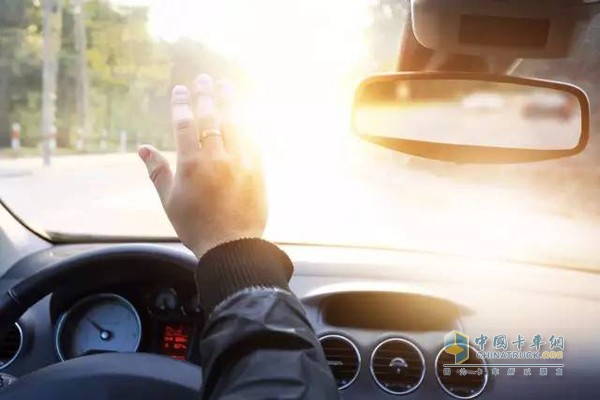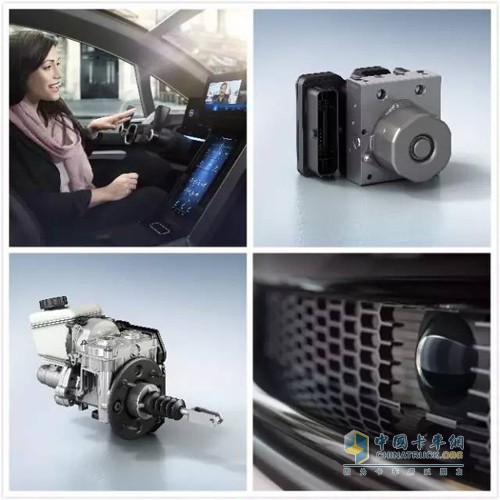Radar sensors, ultrasonic sensors, and video sensors are the sensory organs of modern cars. Functions such as automatic emergency braking, lane keeping, and landmark recognition jointly build a driver assistance system, in which the use of cameras has become increasingly important. The advantage of a video sensor is that it can detect objects and generate pictures with a higher information density. As one of the leading suppliers in this field, Bosch has been producing video sensors that integrate single and stereo camera technology for many years, providing a 360-degree view. In the future, the video sensor will become an important part of autopilot, which requires it to operate reliably even when the light suddenly changes from dark to bright, and vice versa. They must be able to instantly distinguish the dramatic changes in brightness in one shot. Only by accurately sensing the surrounding environment can a self-driving car be safely driven. Autopilot affects almost the entire vehicle, such as powertrain, brakes, steering gear, display, navigation, sensors, and interconnections inside and outside the vehicle. The key to autopilot is the in-depth understanding of all vehicle systems, and on a global scale, few suppliers like Bosch almost include most of the components needed in autopilot, including the ability to correct driving in a timely manner. Erroneous body electronic stability system ESP, human-machine interaction (HMI) technology for flexible human-vehicle communication, iBooster without intelligent vacuum pump, and various types of sensors for environment recognition, etc., which all play a role in automatic driving. Important role. With the development and upgrading of products, Bosch has continued to innovate driver assistance systems and is continuously committed to implementing autonomous driving in phases. Currently, traffic congestion assistance with partially automated driving functions has been in volume production in 2015 and can help vehicles easily reach their destinations in the face of intensive traffic. Height auto-piloting on the highway will be realized by 2020. In 2018, automatic valet parking will be in volume production, and full automatic driving is expected to take place after 2025. In China, Bosch has cooperated with numerous domestic OEMs on driver assistance, braking and steering systems. It is noteworthy that since 2017, Bosch has reached cooperation with Baidu, Gaode and NavInfo's leading Chinese map suppliers to jointly develop a precise positioning service for China's road conditions. Bosch Road Signature (Bosch Road Signature )". Afterwards, it officially signed a strategic cooperation framework agreement with Baidu and will carry out in-depth cooperation in the field of intelligent transportation.
Tapered
Roller Bearings
Tapered roller bearings are mainly suitable
to carry combined load---radial load and as well as axial load; While steep
angle tapered roller bearings (27°-30°) can carry the combined load dominated
by the axial load. The tapered roller bearings are separable bearings, their
internal assemblies and outer rings can be mounted separately; the radial
clearance and axial clearance can be adjusted when mounting and interference
fits are also allowed.
Structures
1.30000
type single-row tapered roller bearings
This type of bearings can accommodate the
axial displacement and axial load on one direction on the shaft or housing. An
additional axial force will be generated under the action of radial load, so
the outer ring and inner ring inside the two bearing slewing should be mounted
with their end faces with same name opposite each other. When applied
separately, the applied axial force must be larger than the additional axial
force.
2.350000
and 370000 types of double-row tapered roller bearings
These types of bearings comprise one
double-raceway outer ring (one double-raceway inner ring) and two inner rings
(two outer rings). There is a spacer between the two inner rings (two outer
rings), To change the thickness of the spacer can adjust the bearing clearance.
They can carry radial and double-direction axial load simultaneously.
3.
380000 type four-row tapered roller bearings
This type of bearing adopts two
double-raceway inner rings, one double-raceway outer rings and two single
raceways. There are spacers between inner rings and outer rings used for
adjusting bearing clearance. They can accommodate large radial load. But their
limit rotational speed is low so they are mainly applied to heavy-duty machines
such as rolling mills.
Cage
materials
Tapered roller bearings generally adopt steel
sheet cages, when with too large sizes, use welded steel sheet cages or steel
pinned solid cages.
Permissible
tilt angle
Generally, inclination is not allowed between
the shaft and the housing on the tapered roller bearings. If any, it should not
exceed 2'.
Tolerance
and Clearance
Generally, the tolerance classes of tapered
roller bearings is P0, also can produce higher tolerance classes bearings
according to the requirement of users. The tolerance value is showing in the
section [the tolerance of rolling bearing".
Users can adjust for practical clearance for
the single-row tapered roller bearings according to different demands. The
radial clearance of double-row and four-row tapered roller bearings is showing
in the table 1.
Dynamic equivalent radial load
Single-row tapered roller bearings:
Pr = Fr When Fa/ Fr≤e
Pr=0.4Fr+YFa When Fa/Fr>e
When applying single-row tapered roller
bearings in pairs, the additional axial force must be counted when computing
the equivalent dynamic load of the bearings. The axial load magnitude is
influenced by mounting methods and the applied axial load and the detailed
computing method is same as angular contact Ball Bearings.
The additional axial load on the single-row
tapered bearings can be approximately computed with the equation below:
S=Fr/2Y
Double-row tapered roller bearings:
Fa/Fr≤e Pr=Fr+Y1Fa
Pr=Fr+Y1Fa When Fa /Fr≤e
Fa/Fr>e Pr=0.67Fr+Y2Fa
Pr=0.67Fr+Y2Fa When Fa/Fr>e
Static equivalent radial load
Single-row tapered roller bearings:
P0r=0.5Fr+Y0Fa
If P0r<Fr, take P0r=Fr
Double-row and four-row tapered roller
bearings:
P0r=Fr+Y0Fa
In the
equation:
Fr Actual radial load of the bearing
Fa Actual
axial load of the bearing
e.Y.Y1.Y2.Y0 see the bearings dimension table.
In order to prevent damaging sliding
generated between the rollers and raceway, a minimum radial load must be acted
on the bearing. The calculating formula is:
Frmin=0.02C
In the
equation: Frmin Minimum
radial load
C Basic dynamic radial load rating
Single Row Tapered Roller Bearing,Double Row Tapered Roller Bearing,Four Row Tapered Roller Bearing Xibei Bearing Co.,Ltd. , https://www.nxzjck.com Bosch pays attention to how to get better vision in harsh driving environment
Bosch pays attention to how to get better vision in harsh driving environment  Highly innovative camera technology
Highly innovative camera technology
Eyes of self-driving cars: Bosch partners with partners to develop new camera technology
When the sun is in a lower position, the driver often has a sudden and visually limited feeling. The glare from the sudden exit of the tunnel in sunny weather can lead to a brief blind drive. Flickering or poor lighting conditions not only affect the driver's vision, but also affect the video sensor working in autopilot. To make it work better, Bosch and Sony Semiconductor Solutions Corporation have reached a cooperation agreement, plans to develop The highly innovative camera technology enables the car to accurately sense the surrounding environment even under harsh lighting conditions.